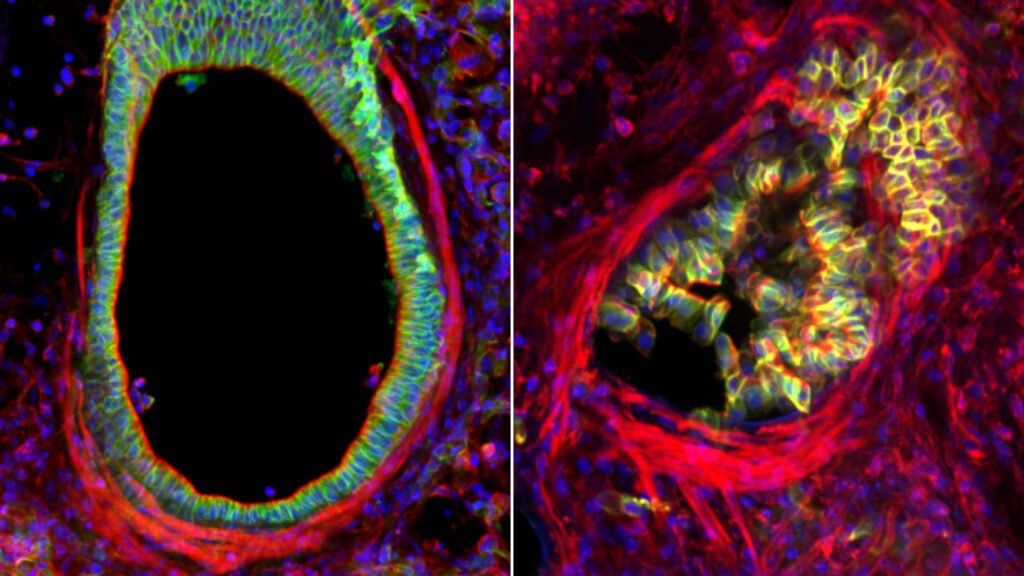Chronic asthma is a condition that currently has no cure, despite the availability of treatments to manage its symptoms. However, recent research has identified a potential unexpected cause of asthma that could potentially change the way the disease is understood and treated. Scientists have discovered that a malfunction in the mechanical process that drives the turnover of epithelial cells lining the lungs may be to blame for chronic asthma attacks. This deeper understanding of the physical force underlying asthma attacks could lead to new approaches for combating the disease.
The mechanical process responsible for epithelial lung cell turnover, known as cell extrusion, involves a cyclical process where overcrowding of lung tissue prompts weaker cells to be expelled, maintaining a healthy epithelial lining in the airways. Previous studies have suggested a link between this process and asthma, though researchers primarily focused on other triggers for the disease. Despite the common belief that asthma was due to muscle constriction around the lungs or persistent inflammation in the airway, recent research has led to the understanding that mechanical forces might play a central role in asthma.
Recent research led by cell biologist Jody Rosenblatt explored the impact of asthma attacks on the epithelial lining of the lungs. Using mouse models and human patient samples, the team found that simulated asthma attacks caused severe overcrowding of epithelial cells, resulting in cell extrusion, mucus buildup, damage, and inflammation in the airways. The damage caused by these attacks could lead to a vicious cycle of future asthma attacks, contributing to the chronic nature of the disease.
Treatment with traditional asthma drugs like albuterol helped relax the airways during the attack but did not reverse the damage caused by excessive cell extrusion. Researchers also tested the effectiveness of blocking cell receptors that sense mechanical force in preventing or reversing the damage from cell extrusion. Inhibiting these receptors led to a decrease in cell extrusion, inflammation, and mucus production, suggesting a potential therapeutic target for preventing lung damage in asthma.
The study’s findings highlight the importance of understanding the mechanical forces at play in diseases like asthma and suggest that targeting these forces could have therapeutic benefits. While further research is needed to validate these findings in both animal models and human patients, the insights gained from this study provide a new perspective on the underlying causes of chronic asthma. By addressing the mechanical aspects of the disease, scientists may be able to develop more effective treatments that target the root cause of asthma, offering hope for improved therapies in the future.

